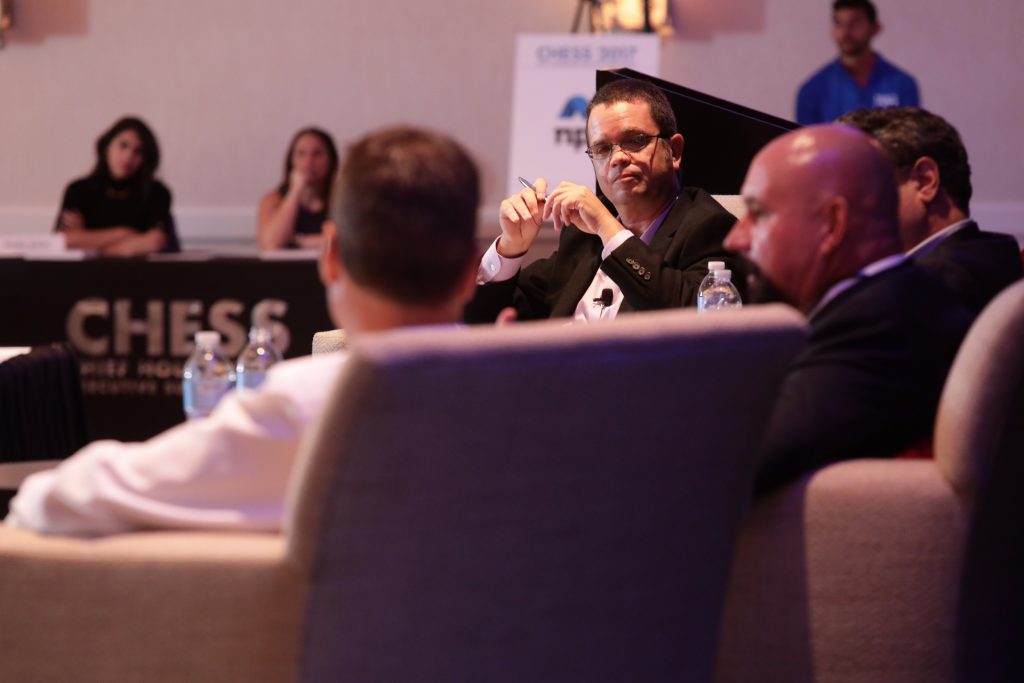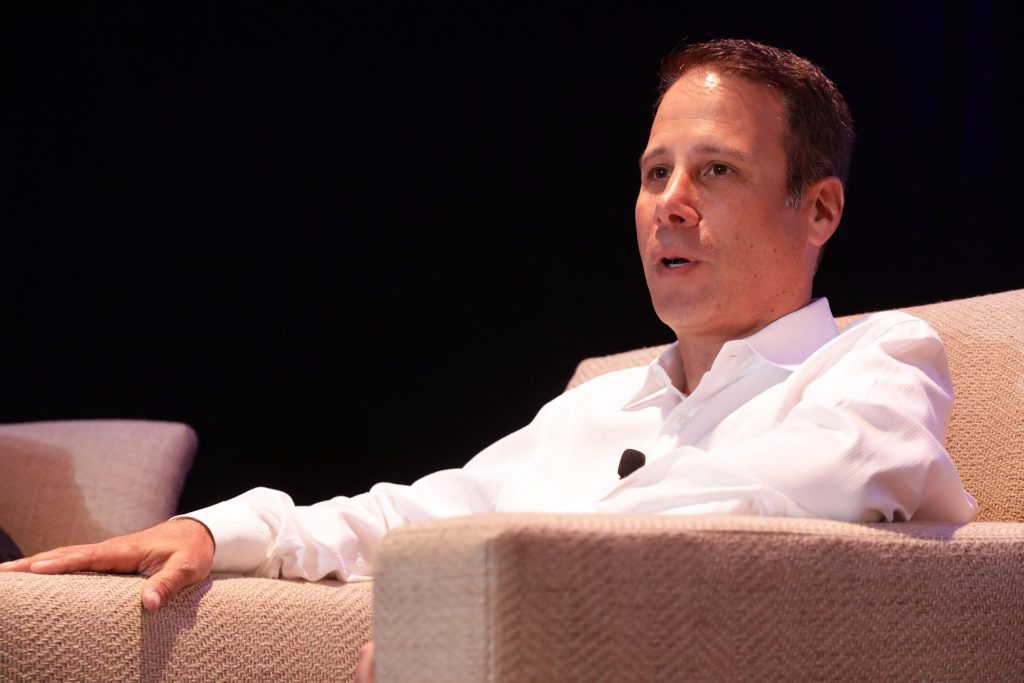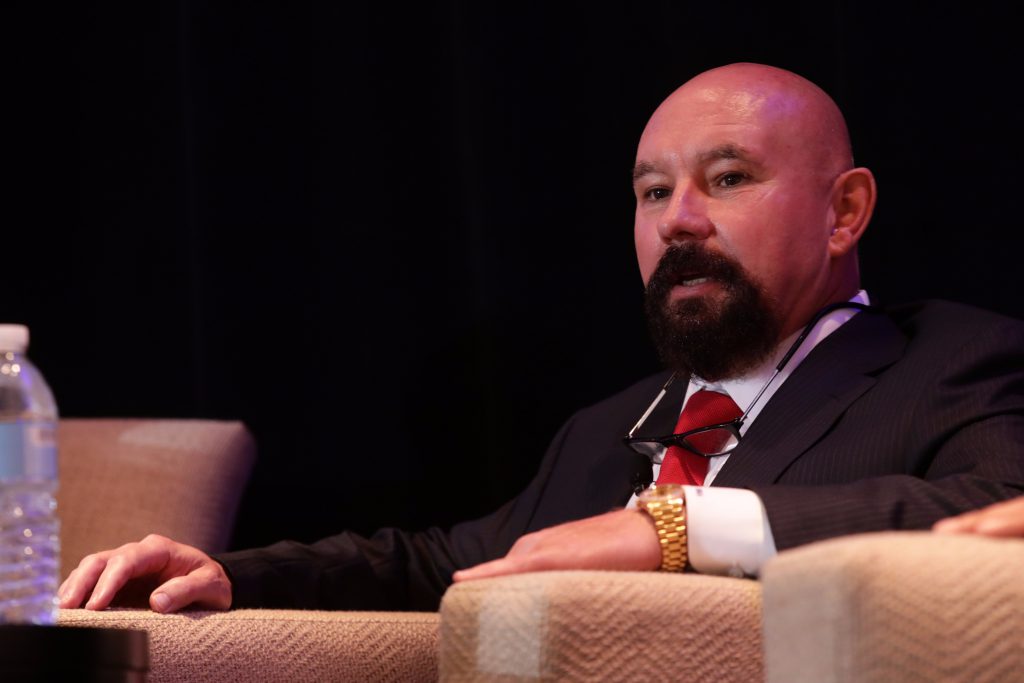CHESS 2017 opened with the annual favorite conversation-starter—the Housewares Hot Seat panel, moderated by Peter Giannetti, Editor-in-Chief, HomeWorld Business. Changing Channels, the sixth in the series of Hot Seat panel discussions, joined panelists Bruce Kaminstein, Executive Chairman, Casabella Holdings LLC; Michael Stoll, President, UT Brands, and Neal Asbury, CEO, Legacy Companies. They engaged in a frank discussion on navigating rocky paths with struggling traditional channel partners and building new online identities and customers.
Giannetti mentioned several recent events to frame the discussion on how to manage disruption with blurring channel boundaries. Rules have changed—after early resistance to digital commerce, now some housewares companies count on digital as their largest or fastest growing channel. Peter asked the panelists to introduce their companies and outline their perspectives on the coming year.
Bruce Kaminstein, the founder of Casabella, announced that the company was recently acquired by Bradshaw.
Our company is poised for growth. This acquisition benefits both partners as we form a new lifestyle brand. Casabella’s industrial designers do it from scratch—we create products that must be functional and best in class. We must focus in a new way on product development in a dramatically changing landscape.
Neal Asbury is owner of the Legacy collection of companies, which includes iconic brands such as West Bend as well as commercial businesses.
We’re serious about backshoring, or the reshoring movement, to bring production back to the U.S. We’re bullish on American manufacturing and are looking for further acquisition.
It’s an exciting time to be an entrepreneur. We’ve seen disruption many times in the past. Remember the 1970s when stores moved from Main Street to the malls. That hurt some but also created much wealth, created many jobs, and U.S. consumers got better products and better prices. Expect twists and turns—and consumers will win and visionaries who adapt will succeed. The American consumer will continue to need products and there is increasing demand from the world consumer. Secondly, we control products and must sharpen our focus and adapt.
Michael Stoll, president of UT Brands, described their three brands: the clever Urban Trend kitchen tools, KidsFunwares that encourage family unity at the table and get kids to eat healthy meals, and Barbuzzo, which is all about innovative fun home entertaining and creative gift products.
The common thread of the brands is to create wow factor in retail environment. We help retail be more interesting. We were reluctant to do business online, and we operated one way with one foot and with the second we did everything different. This is one of the strongest economies in my lifetime and we have to figure out how to take advantage of opportunities without abandoning what we did before. To do business in this economy, I feel more like a retailer: we have to build our inventory for peak sales seasons. We all need to adjust to our customer base and what they buy. It’s an exciting time. We have to figure out what to do, and once you pick your path, put your head down and get to work.
Moderator Peter Giannetti posed some general questions and others that were more pointed. Panelists built on one another’s comments. Some of the exchanges are summarized below.

Peter: When we look at the traditional retail channels, we defined ways to do business with each, but with digital commerce everything is available to everyone. Channels don’t mean what they used to mean—we have to approach channel strategy more delicately. Can we build a new service approach for Amazon while giving other customers a chance, knowing that they too are challenged by the Amazon phenomenon?
Neal: Amazon is building out brick and mortar stores; they bought Whole Foods and are building bookstores. Retailers are investing big in digital, they’re not sitting idle. When I did a presidential leadership course at Harvard, everyone talked about AOL and how it exceeded GM. Now it’s gone and others have come up. The new rule is there are no rules, and the wall between traditional and non-traditional has come down. Dot.com became brick and mortar and B&M is going digital.
We have different brands for varied channels: Back to Basics and Chef’s Choice speak to different demographics and different consumers. We segregate brands and price points by retailer – features differ between name brands and house brands. We have more tools today than in the past.
Peter: Michael, yours is a young company. Talk about the transition from not selling digital to sustaining a business with other customers.
Michael: We are differentiating our customers to build unique products for them. It’s not the same competition as in the online world. Some are embracing us, others are reluctant to commit to quantities and buy over time. Retail needs to reinvent itself to compete online.

Peter: The opportunity to sell direct to the consumer didn’t exist 20 years ago. How can you be the channel to the consumer?
Bruce: We really changed our thinking. Our own website is a business in itself—five years ago we were questioning this. We are thinking differently, we’re closer to the consumer and we create better product because of this consideration in our product development.
Michael: Yes, access to consumer feedback helps us with customers. It’s critical to help us grow with our other customers.
Neal: With some of our higher priced products we discovered the communities out there. These communities want us to be the thought leaders. The people into vegan foods, juicing and outdoor living are very passionate. And serving the passionate consumer is the best place to be – it’s most profitable.
Bruce: Talking directly to users and bloggers stimulates growth in ecommerce.
Peter: How do you leverage with retailers when they are struggling with disruption? Are they opening themselves to new products and making changes, or are they stuck in financially motivated decisions?
Michael: Some want new, but others are frozen in time and don’t want to make changes. It’s like during recessions.
Neal: When I hit a brick wall, I go back to my entrepreneurial roots. I hope retailers will take risks and be better experts, help to sell, do something new. We need higher quality stores to help customers make better decisions. We need to improve displays at point of purchase. There’s a lot of sloppiness out there that needs to be cleaned up. We help them sell our products.

Peter: How do you create differentiation?
Neal: We’ve invested in great brands and great stories. Not by accident, we own manufacturing facilities so we can be flexible in what we make. We recently acquired manufacturing facilities in China. I have a strong tie to that part of the world, it’s very natural for me. It gives us flexibility to respond. We have great engineering, product development and marketing, so we can move quickly.
Don’t neglect the opportunity of the international customer: 75% of the world’s wealth is outside the U.S. I was in Asia as a young kid. Everyone wanted a slice of America. They could go to McDonald’s or Pizza Hut and it was intoxicating. I encourage U.S. businesses to go overseas. There are great opportunities for our retailers to expand.
Bruce: Also, the grocery market is a huge opportunity for us. Our industry should look at grocery stores, and adjust to this new challenging market to sell. They still hold on to many old ideas about shelf space, but the class of kitchen tools and goods are now upscale and smaller stores are adapting to the competitive marketplace with new product.

Peter: I keep hearing that the product is star even with something simple like an ice cream scoop. How do you sustain that?
Michael: Build the whole story of how you brought the product to life. Consumers want an attachment to your story. We’re a small company; we launch about 50 new products per year and we keep consumers as part of the process. It adds freshness to retail. Consider life-changing events, like moving into a new home, when a consumer might buy a new collection of products for that occasion. When people ae browsing at retail, they want to discover new things. We need to be there to be found.
Peter: The economy is going through a positive experience, but business challenges have disrupted that momentum. You start as a product business and become a distribution business. What’s next?
Bruce: Really think about the product and be E-commerce focused. Considering only B&M retail is a mistake. You have to make up the store traffic with digital.
Panelists and moderator agreed: flexibility is the new stability.
Questions from the audience included pricing, assortment strategies, freight charges for online consumers, online knock-off products, channel conflicts, drug stores and club sales. Attendees also asked about tech investments in online sales and developing brand identities with voice commands.



